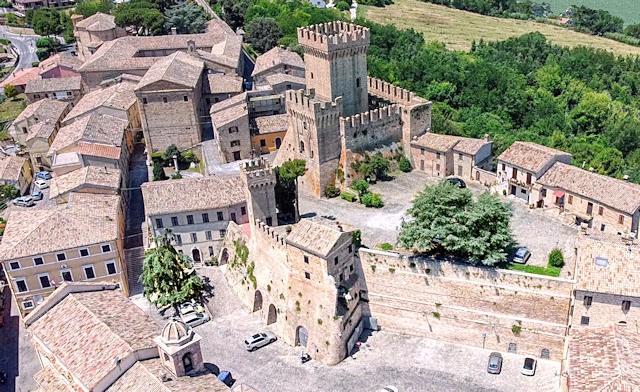"Joining the Mise project and developed by Infratel" Piazza Wifi Italia "allows our administration to offer new services to citizens and tourists, thanks to the hotspots installed and to which you can connect for free by downloading a simple App.
Offagna, which is part of the club of the most beautiful villages in Italy, stands on the hills of the Marche hinterland, in a panoramic and strategically dominant position. The first news of a Castellum comes from an ancient document where it is said that it was built between 958 and 978 and the chosen site was Mount Sentino (from the Latin sentis "thorn, bramble"), a tuffaceous block at 309 meters above the sea level, one of the highest hills in the Osimo-Camerano-Gallignano-Polverigi quadrilateral: the same summit around which the town of Offagna still clings today.
The toponym Ofania has been the subject of various interpretations, but the most recurrent makes it descend by lexical alteration from the Afraniana mass, a vast landed estate established in Roman times in favor of the gens Afrania. The Afrani were an illustrious family that had possessions in the Offagnese territory. After the year 1000, after the crisis, the agricultural products market rises, handicraft activities take shape, religious functions are held, and the parish from "rural" becomes "castellana". The qualitative leap from Castrum to Comune is accomplished when the Terra d'Offagna, weakened the claims and riots of the local nobility and freed itself from the Osimani, manages to give itself its own legislation. The promulgation of the "Statuti d'Offagna" dates back to the first half of the 14th century. In the following decades: Ancona and Osimo contend Offagna, which was then ceded by Pope Nicholas V to Ancona.
The fortress is a notable example of military architecture from the period between the Middle Ages and the Renaissance. It is an almost quadrangular building with an eccentric keep and rests on a tufaceous cliff which greatly increases its defensive power. Given the strategic position, the presence of any moat was not necessary; on the other hand the entrances were located at a considerable height with respect to the ground, so that, once the two access drawbridges were withdrawn, the fortress remained perfectly isolated. Inside the Rocca di Offagna, built between 1454 and 1456 with the architectural structure still preserved today, there is a rich exhibition of ancient weapons and precious finds, created in collaboration with the Academy of Oplology and Militaria of Ancona and the State Museums of the Republic of San Marino. A section of the exhibition is dedicated to Hunters and warriors from stone to steel, displays of weapons for hunting and combat curated by the Superintendence for Archaeological Heritage of the Marche. "
